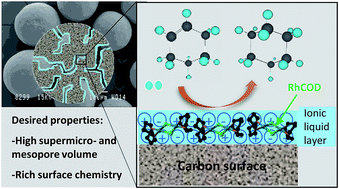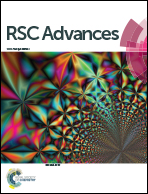Support effects on SILP hybrid catalysts prepared with carbon materials and the RhCOD complex†
Abstract
The Rh complex RhCOD has been immobilized on different carbon materials by means of the SILP methodology (Supported Ionic Liquid Phase) with the purpose of preparing hybrid catalysts (those combining the advantages of homogeneous and heterogeneous catalysis). The catalysts prepared in this work have been tested in the hydrogenation of cyclohexene showing good activity, and being all of them more active than an equivalent biphasic system. They are reusable without significant loss of activity in at least three runs. An important effect of the support properties, related to the pore texture and the surface chemistry, has been found. Likely, an appropriate combination of high supermicropore volume, high mesopore volume and a reach surface chemistry leads to the best results. The obtained results should stimulate analogous research on the challenging development of chiral SILP catalysts.


 Please wait while we load your content...
Please wait while we load your content...